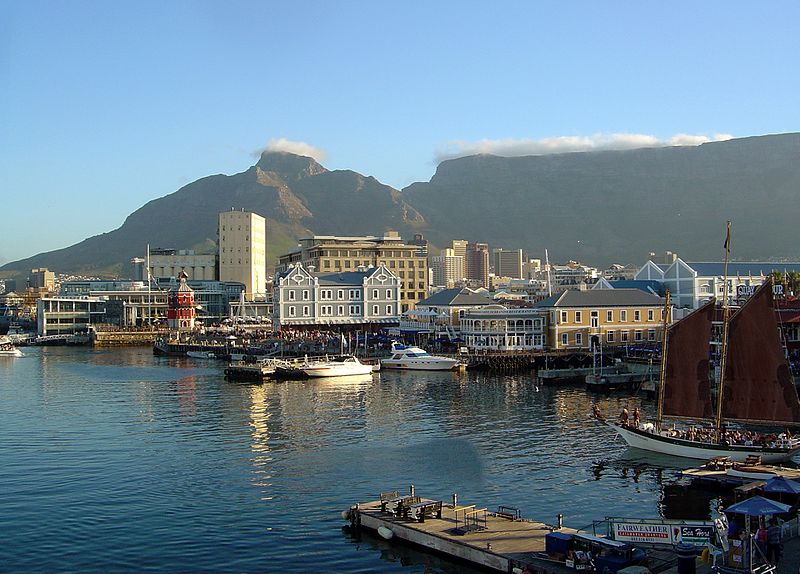A city and surrounds full of history and natural wonders, Cape Town offers up a special pocket of colour that’s a standout
Cape Town in South Arica is everything and more you could ever learn about it. The city spreads across the bottom of the mountain range that is topped by the protective shadow of Table Mountain; it leans towards the sea and is a hodgepodge of various architecture from the gated elegant McMansions and villa communities to simple suburban beauties. There are shanty houses, old blocks of flats and new, smart and edgy developments.
One area of Cape Town has set itself as an example of longevity, savvy survival and colourful enough to entrance visitors to its doorstep. It’s the Malay Quarter, Cape Malay at Bo-Kaap. Stroll around the gently undulating streets and be delighted at the sight of pretty houses, immaculately painted in bright, vibrant colours – fuchsia, lavender, jade, sunflower and cobalt - with gleaming white trim. The effect is stunning and a rainbow pattern of little homes along a terrace.
Not always so neat and pretty these homes were built to house slaves from Malaya and Indonesia, brought to South Africa because of their skills in building, tailoring, gardening and cooking. Not a happy time for many a century or so, with houses packed to the gunnels with the slaves.
With the emancipation of slaves in 1834, many moved to the Bo-Kaap district, then a settlement for disadvantaged communities. The district is on the top of Signal Hill and above the bright colour line is Table Mountain. The district has been listed as a National Monument because of the pre-1840 architecture still standing.
This is a bright spot less than two kilometres in extent. This is a happy, multicultural home to more than 12,000 inhabitants.
Cape Cuisine
Also out of this area comes the magic of Cape Malay cuisine, a splendid fusion of spices and traditions from – and although called Malayans, most of them came from Sri Lanka, Madagascar, and Indonesia in the Far East. Each section of these communities brought with them sweet and sour culinary traditions and creativity in the use of fragrant herbs and spices. This group had the largest influence on South Africa’s cuisine than any other group. Who would have thought that when the Dutch settlers brought t them into the Cape colony in the 17th century, that today their food, and resilience has outlasted the Dutch regime.
One of the most famous delicacies from the Cape Malay kitchen is ‘Bobotie’, traditionally a ‘Monday’ dish, made from leftovers from Sunday’s cooking. There are hundreds of variants in this dish – but the essential ingredient is ‘begrafnisrys’ (funeral rice); rice with turmeric and raisins, so called because it was served as a funeral meal by Cape Malayans.
Bobotie has become highly popular in South Africa as is now regarded as an indigenous dish. Soaked bread is mixed with minced meat and flavoured with fried onions, curry powder, apricot jam, fried almond slivers and sultanas. Add some lemon juice and halfway through cooking – cover with a topping of egg custard to give it a golden crust on top.
Served with sambals and atjars, Cape Malay curries are famous for the full-bodied flavour. So if you hanker for spice – you’ll find the most fragrant dishes served Cape Malay style in Cape Town.
There’s nothing dull about this region on earth – colour, spice and the magic of the glorious scenery, this cape flies!
Visit: www.southafrica.net and for a cooking safari www.bokaap.co.za
DID YOU KNOW?
Slaves had one day off a year when they paraded through the streets. To avoid punishment for singing about oppression they had to disguise themselves. Hence, the flamboyant costumes of today’s Cape Town Carnival.
The old Malay Quarter with its steep and narrow streets, the plain artisan houses, Mosques and Minaretts reaches from Buitengracht street up to Signal Hill. The houses have been restored and colourfully painted. The architectural style is a synthesis of Cape Dutch and Edwardian.
One of the oldest buildings in Wale Street, number 71, houses the Bo-Kaap Museum. It is furnished as a Muslim house of the 19th century and documents the history of the Cape Malays. The museum is open from Mondays to Saturdays from 9.30am to 4.30pm.
photos: Andreas Tusche, Bev Malzard

Comments
Accidental Travel Writer
What a quaint little village, and I love those clouds on the hilltops! Great picture!